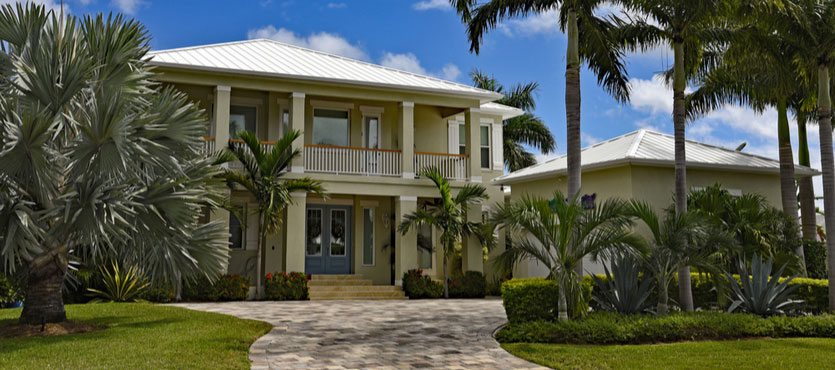Landscaping with native trees to South Florida, like the sea grape and southern magnolia, offers countless benefits, including the fact they are easier to maintain.
According to the Association of Florida Native Nurseries, there are approximately 70 nurseries in the state of Florida with a combined collection of over 500 different plants. Some of these varieties include non-native trees, but there are plenty of native trees to South Florida to pick from as well.
Some of the most commonly found native trees at nurseries in our state include:
Sea grape (Coccoloba uvifera)
Mahogany (Swietenia mahagoni)
Bald cypress (Taxodium distichum)
Live oak (Quercusvirginiana)
Southern magnolia (Magnolia grandiflora)
Gumbo limbo (Bursera simaruba)
Buttonwood (Conocarpus erectus)
Southern red cedar (Juniperus silicicola)
Cabbage palm (Sabal palmetto)
While there are other native trees to the state, these are some of the most commonly found varieties at Florida’s nurseries. Some native trees are far more attractive than others, for instance the satin leaf tree is better looking than its fellow native, the wax myrtle.
3 Benefits to using native trees and plants
1. More energy efficient
Native plants thrive in our natural soil, temperatures and precipitation levels. As a result, they require less fertilization and watering, saving energy and valuable resources.
That doesn’t mean a native plant is always going to thrive no matter where you plant it in South Florida. Certain plants do better in moist soil while others, such as the pond apple, prefer drier soil. Additionally, landscaping can change the natural soil and water flow of the land, making it difficult for native trees to survive. Working with a landscaping specialist ensures you plant the right trees to thrive in the conditions presented by your yard.
2. Better for the local environment
Native plants help safeguard the natural resources of our state. Planting more natural plants offers a place for local wildlife to thrive, whereas exotic species can cause infestations of insects that harm local environments.
In recent years, greater attention has been brought to using native plants because of the damage done regarding exotic plants. For instance, the Brazilian pepper and punk tree have become horrible sources of weeds in central and south Florida.
Luckily, not all exotic trees have negative effects on our local environment, but some do so plant with caution.
3. Lower maintenance
Native plants have built up solid immunities to local pests and diseases, which makes them easier to maintain. They are also adapted to survive on local rainwater and therefore require less watering and babying.
Native plants are even more desirable if…
You are landscaping an area with pre-existing vegetation.
If you’re mixing new landscaping with natural landscaping, it’s important that everything flows together. Pairing native plants with exotics might look out of place.
You are landscaping an environmentally fragile area (coastlines, wetlands, barrier islands).
Florida is full of environmentally sensitive eco systems, especially along our massive coastline. Native plants are best suited to these areas because they naturally reduce deterioration of shrinking coastal lands. Plus, they are adapted to the harsh conditions coastal plants must face—like high winds and salinity, and storms.
You are landscaping a city square, park or other public location.
Native trees should be incorporated into public landscaping as much as possible. First, to spread awareness and education regarding native trees. Secondly, they are often required when restoring disturbed areas on nature preserves.
Are Native Trees Best for Your Landscaping?
Answer the following questions to determine if native trees are the best option for your landscaping.
What used to be there/what’s currently there?
The type of landscaping that exists naturally gives clues as to what does or does not thrive in the surrounding soil, sunlight, etc. Plants that have grown in the area throughout time are going to do better when replanted as opposed to exotic species.
Has the natural soil been changed in any way?
It is very common for topsoil to be removed during construction, thus robbing the soil of vital nutrients and shifting drainage patterns. Depending on the type of soil brought in to fill topsoil, different plants will do best. The same species that once thrived in the area may no longer do as well without modifications.
What are the conditions of your yard? Is your yard bathed in shade most of the day, or a bright and sunny hotspot?
The characteristics of a space must be taken into consideration to find the best plants and overall layout.
Let Xtreme Landscaping help you with all your tree needs—from native to exotic species, we have the experience and passion to surpass all expectations.

